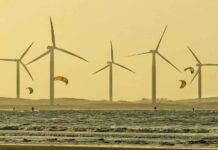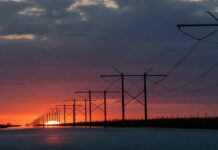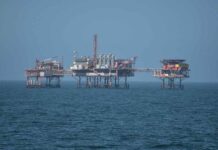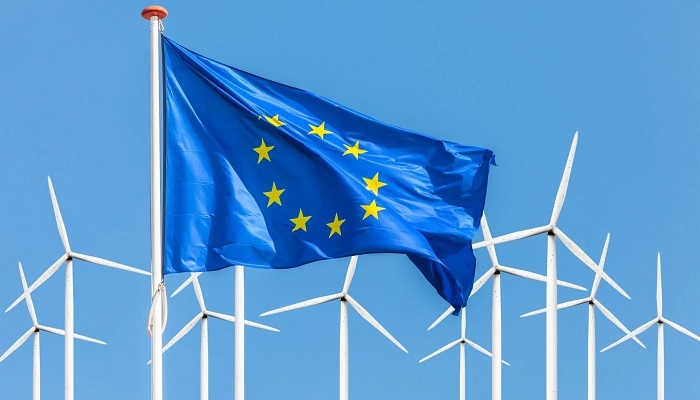The power producers of Europe went on to generate more electricity from wind and not coal for the very first time in the last quarter of 2023, thereby marking a major landmark for regional energy transition endeavours.
Europe’s utilities apparently went on to generate a record 193 terawatt hours- TWh of electricity from wind sites within the October to December bracket in 2023, vis-à-vis 184 TWh from coal-fired power plants, the think tank Ember data shows.
It is well to be noted that the wind generation in the final quarter of 2023 was almost 20% above than within the same quarter in 2022, and that appeared despite the setbacks for the wind installation sector last year because of high labor and material costs as well as financing expenditures.
The new policy support that happens to be agreed upon by European lawmakers in late 2023, which also has financing for turbine manufacturers as well as shorter permitting times for developers, should help boost regional wind generation in 2024 to another level and may as well go on to widen wind power’s stretch over coal in the time to come.
Is this a coal comeback?
Although the additional wind generation capacity happens to be widely anticipated across Europe in 2024 and beyond, the outlook when it comes to coal-fired generation is indeed less clear and will be a major element when it comes to determining how sustainable wind power’s lead over coal should very well be.
Especially the coal-fired output in Germany, Poland, as well as Turkey, which account for almost half of Europe’s overall coal-fired generation, would be vital in terms of determining if Europe as a whole can go on to sustain its very recent clean energy surge away from fossil fuels, which are highly polluting.
It is worth noting that Europe’s three largest coal consumers pared coal usage in power generation to multi-year lows within the first half of 2023 as weak regional industrial functioning lessened the total power demand just as usage went on to bring bigger volumes of clean power online.
But every nation after that ramped up coal-fired generation throughout the forthcoming months of 2023 since the demand for heating surged, although the overall coal-fired generation in all these countries remains well below the peaks that were witnessed previously.
Marching forward, the entire economic momentum will be a key deciding element when it comes to how much coal has been used for power generation across each country.
If manufacturing activity goes on to bloat in 2024, as is being fostered in every country due to supportive government policies, the entire power consumption will go on to rise and will most likely force power generation firms to raise the output from fossil-fuel plants along with renewable sources.
Especially any sustained upturn in the output from heavy industry, specifically among chemical, steel, as well as fertilizer plants, is most likely going to place strain on national power systems and at the same time require greater generation from coal as well as natural gas plants in order to accommodate the associated surge within the overall energy consumption.
But if regional industrial activity stays muted this year, in spite of an ongoing government stimulus effort, then the energy demand in total shall remain much below the previous peaks and will hence enable the power generation firms to go ahead with the proportion of clean electricity within the generation mix.
The Momentum of Wind
Irrespective of the present state of European industrial consumption as well as the activity in 2024, power developers are anticipated to ratchet up the construction of wind power projects and grid connections this year, specifically in the major markets like Germany, the UK, France, Spain, and Denmark.
Moreover, numerous government tenders in terms of new wind capacity, both in terms of onshore and offshore, are anticipated in 2024 because of the regional European Union policy agreements that got sealed in 2023 due to the setbacks for businesses concerning the wind sector.
Germany, apparently, plans a tender when it comes to 8 gigawatts- GW of new offshore capacity this year, whereas Denmark, on the other hand, is expected to start auctions for a total of 9 GW of offshore projects in 2024, as per S&P Global.
Notably, it is expected that France is also going to boost its wind power footprint in the coming year by way of supporting the construction of two floating wind farms with a total capacity of almost 280 megawatts- MW off the south coast of the country.
As these as well as other projects come online, they will have to further elevate total wind generation in Europe beyond the 604 TWh created all across 2023 and enable the region to broaden its recent surge when it comes to strong annual clean power expansions.
In the near term, European coal-fired power generation may go higher since industrial activity goes on to recover, but if the power firms follow on the planned development pipeline, wind power is all set to consistently overshadow Europe’s coal power electricity generation mix in the long run.




































